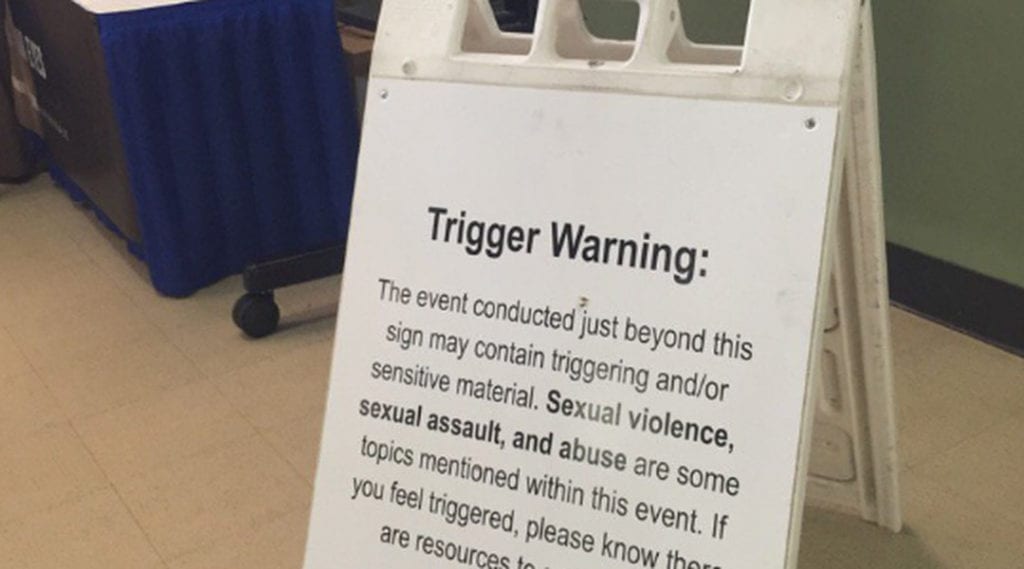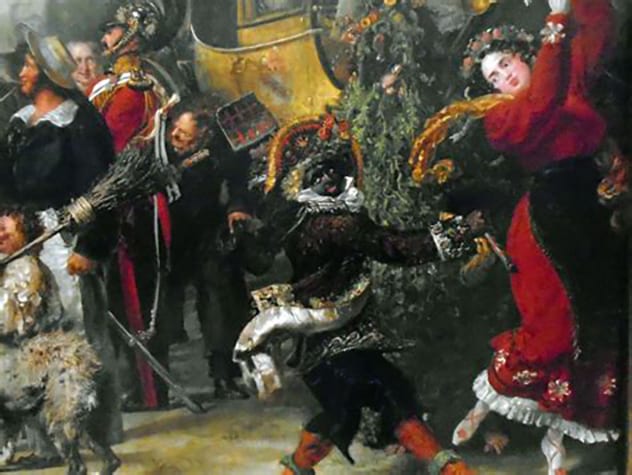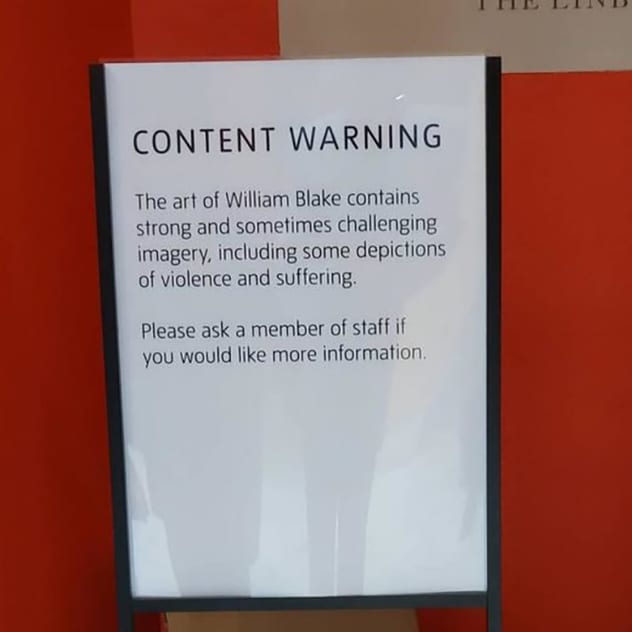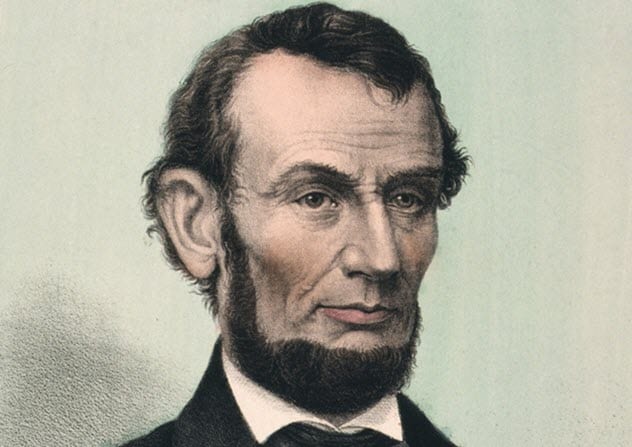 Technology
Technology  Technology
Technology  Humans
Humans 10 Everyday Human Behaviors That Are Actually Survival Instincts
 Animals
Animals 10 Animals That Humiliated and Harmed Historical Leaders
 History
History 10 Most Influential Protests in Modern History
 Creepy
Creepy 10 More Representations of Death from Myth, Legend, and Folktale
 Technology
Technology 10 Scientific Breakthroughs of 2025 That’ll Change Everything
 Our World
Our World 10 Ways Icelandic Culture Makes Other Countries Look Boring
 Misconceptions
Misconceptions 10 Common Misconceptions About the Victorian Era
 Mysteries
Mysteries 10 Strange Unexplained Mysteries of 2025
 Miscellaneous
Miscellaneous 10 of History’s Most Bell-Ringing Finishing Moves
 Technology
Technology Top 10 Everyday Tech Buzzwords That Hide a Darker Past
 Humans
Humans 10 Everyday Human Behaviors That Are Actually Survival Instincts
 Animals
Animals 10 Animals That Humiliated and Harmed Historical Leaders
Who's Behind Listverse?

Jamie Frater
Head Editor
Jamie founded Listverse due to an insatiable desire to share fascinating, obscure, and bizarre facts. He has been a guest speaker on numerous national radio and television stations and is a five time published author.
More About Us History
History 10 Most Influential Protests in Modern History
 Creepy
Creepy 10 More Representations of Death from Myth, Legend, and Folktale
 Technology
Technology 10 Scientific Breakthroughs of 2025 That’ll Change Everything
 Our World
Our World 10 Ways Icelandic Culture Makes Other Countries Look Boring
 Misconceptions
Misconceptions 10 Common Misconceptions About the Victorian Era
 Mysteries
Mysteries 10 Strange Unexplained Mysteries of 2025
 Miscellaneous
Miscellaneous 10 of History’s Most Bell-Ringing Finishing Moves
Top 10 Signs Trigger Warnings Have Gone Too Far
Warning: if you are easily disturbed by lists discussing how easily disturbed some people are, you may want to look away. This entry may include references to adult content, as well as mockery of childish adults who can’t deal with anything remotely risqué without receiving official notice beforehand.
When Disney movies, centuries-old art and even the Muppets are too controversial to be presented without disclaimers, it’s time to seriously reassess whether we’re being a bit hypersensitive. Here are ten signs that trigger warnings have shot past reasonable into the realm of the ridiculous.
10 Ways Young Generations Are Better Than Their Parents
10 Those Racist Muppets
The streaming service Disney+ recently began carrying Jim Henson’s original “The Muppet Show.” Airing more than 100 episodes from 1976-1981, the family-oriented variety show featured a cast of lovable puppets who were the epitome of wholesome entertainment.
But apparently even Kermit the Frog is no match for modern-day hypersensitivities. Disney+ has added a disclaimer to several episodes, warning of “negative depictions and/or mistreatment of people or cultures” throughout the series. Openly applying 2020s standards to 1970s society, the advisory continues: “These stereotypes were wrong then and are wrong now. Rather than remove this content, we want to acknowledge its harmful impact, learn from it and spark conversation to create a more inclusive future together.”
Episodes that open with the disclaimer include those guest-hosted by Steve Martin, Johnny Cash, Peter Sellers, Kenny Rogers, Marty Feldman and Joan Baez. Disney+ has not detailed the “negative depictions” that prompted each content warning but, in one episode from 1980, Johnny Cash performs while standing in front of a Confederate flag. In another, from season three, Spike Milligan appears in an array of caricatured national costumes while performing the classic racist anthem “It’s a Small World After All.”
Disney+ has applied similar disclaimers to other decades-old content, as part of its “Stories Matter” initiative, which was launched to improve representation in its output. Critics argue that, if stories really mattered to Disney, then Star Wars Episodes VII, VIII & IX would have had coherent plots and compelling characters.
9 Loony Toons
Disney+ isn’t stopping at just “The Muppet Show” – not by a longshot. The streaming service is quickly becoming the top gun of trigger warnings. Eight-year-olds everywhere will be relieved to learn that Disney+ is currently “in the process of reviewing our library and adding advisories to content that includes negative depictions or mistreatment of people or cultures.”
Or cats. “Lady and the Tramp” now has a warning because its Siamese cats “perpetuate Asian stereotypes.” Meanwhile, “Peter Pan” now braces viewers that the movie “portrays Native people in a stereotypical manner that reflects neither the diversity of Native peoples nor their authentic cultural traditions.” The pirate community is also apparently up in (hooked) arms.
Both versions of Aladdin also include such after-the-fact apologies; the 1992 animated version for its depiction of Middle Eastern peoples, and the 2019 live-cast version for its depiction of acceptable acting performances.
All kidding aside, such unnecessary trigger warnings detract from their effectiveness in instances where such disclaimers are entirely appropriate. For example, the 1942 Disney classic Dumbo includes a series of dancing black crows – including one literally named Jim Crow – and a team of faceless black men building a railroad while singing about their illiteracy and negligence, reinforcing common anti-black tropes of the day.
8 The Snowflake Must Go On
What’s a good play without properly propping up theatergoers against anything remotely intimidating? I’d say “break a leg,” but that might suggest potentially violent subject matter.
Increasingly Broadway has broad warnings bracing audiences for any number of sensitive subjects. For example, when the Denver Theater Company presented “Vietgone,” a play about a Vietnamese couple who meet in an Arkansas refugee camp during the Vietnam War, the playhouse posted signage in the lobby that read: “Please be advised, this production contains… sudden loud noises, theatrical fog/haze, scenes of violence, adult language, sexual situations, and adult humor and content.” Good thing they gave a heads up about the fog – triggering, let’s assume, to folks concerned about developing cataracts – and fair warning that a play set in a wartime refugee camp would deal with grown-up stuff.
Philadelphia’s Interact Theater Company went even further: In addition to warning that the play “Sensitive Guys” included depictions of sexual assault, the company designated a “safe space” in the lobby, and invited a group called Women Organized Against Rape to talk to patrons upset by the material. Or, you know, they could just go to a different play.
Even theatrical classics aren’t exempt from kid-gloving patrons: For a production of “Oklahoma!,” a venue in Brooklyn handed out a card to attendees warning of gunshots as well as “moments of darkness and violence”—and offering guidance for those who felt compelled to walk out. It’s unclear whether that guidance included “Grow up.”
7 Feelings Over Fitzgerald
Colleges get the brunt of criticism for their widespread incorporation of trigger warnings, and for good reason: because it is here where the widest swath of sophisticated subject matter is being shielded from – and even sanitized for – mature yet moldable minds.
College-level literature – from Faulkner to Fitzgerald and everything in between – is a prime example of an artistic medium that is INTENTIONALLY provocative. Because of this, such art is particularly prone to having its impact degraded by an ever-increasing litany of disclaimers intended to protect the feelings of individual readers.
As Jen Doll wrote for The Guardian, “the intention of art… is not meant to shield us from pain so much as offer a vessel through which we can cope, grow and even move past tragedy. If we warn people with a flashing red light that inside great works of literature they are likely to find pain, we do a disservice to the conversations, and the healing, meant to come through the act of reading itself.”
The list of literary classics susceptible to trigger accusations is, as Doll points out, essentially endless. “The Great Gatsby (for misogyny and violence), Huck Finn (for racism), Things Fall Apart (for colonialism and religious persecution), Mrs. Dalloway (for suicide), Shakespeare (for … you name it).”
Young adults are being taught that their feelings are as important as William Shakespeare’s pen. Then we complain about their false sense of entitlement.
6 A Professor-perpetuated Prophecy

The most prominent factor in the explosion of trigger warnings on college campuses isn’t the students themselves, but rather their instructors. Simply put, professors are “pre-bending” to their students’ perceived heightened sensitivities in a sort of widespread educational ass-covering.
A survey of more than 800 college instructors by the USA’s National Public Radio found that more than half have used trigger warnings in their classes. However, just 1.8 percent said their institutions had any official policies about their use and – even more revealing – only 3.4 percent said students had requested such warnings.
Per Anya Kamenetz’s report on the survey, “the picture that emerges is of professors making private decisions within the four walls of the classroom. Most instructors who told us they’d used trigger warnings – 64.7 percent – did so because they ‘thought the material needed one.’”
So basically, college professors are taking it upon themselves to preemptively impose trigger warnings on various readings, films, lectures, etc. they use as instructional materials. Undoubtedly, many have a defensive rationale in mind – meaning they don’t want a sensitive student to literally cry foul and get them fired.
Regardless the motive, making trigger warnings the norm – the NPR survey is from 2016, and such disclaimers have only grown more prolific since then – only serves to perpetuate the practice of protecting students on the verge of adulthood from the adult world. Largely, then, thin-skinned, ill-equipped college students have become a prophecy fulfilled not by themselves but rather their professors.
5 Smells Like Teen Triggers
By no means do college campuses have a monopoly on slapping disclaimers on literature. An entire cottage industry seems to be dedicated to bracing teens and tweens for a broad array of subject matter in young adult books.
One such collection lists nearly SEVENTY types of triggers, ranging from understandably flagged topics like rape and racism to… well, pretty much anything that could be perceived as even mildly upsetting. These questionable-at-best disclaimers include: ableism, divorce, disowning, guilt, hospitalization, manipulation (a.k.a. “toxic relationship”), narcissistic behavior (a.k.a. “being selfish?”), paranoia, and terminal illness.
Some of the categories show an almost stunning lack of trust in a young mind’s ability to engage with the real world. Disclaimers on some young adult literature include those warning of characters with anger issues, anxiety, depression, OCD and something called “depersonalization disorder,” which apparently occurs when someone feels they’re observing themselves from outside their bodies. Trigger notices also exist for instances of car accidents, death, eugenics (apparently head measuring is upsetting?), hallucinations, homelessness and pregnancy, as well as the all-encompassing, cover-your-ass-friendly “medical stuff.”
4 Art Attack, Part 1

It’s unsurprising that trigger warnings would become prevalent in the art world. After all, some contemporary art seemingly sees shock value as its raison d’être. An art gallery slapping a warning on a depiction of a beloved saint painted with feces is understandable, regardless of whether you agree with such a notice. Tate Britain, one of the UK’s most prestigious art museums, seems to be leading the slide down this slippery slope.
Last year, the Tate’s British Baroque Era exhibition featured a variety of period figures flanked, unsurprisingly, by black servants. As reported by critic Alexander Larman, a sign posted at the exhibition warns visitors – who, one would assume, are knowledgeable enough about 17th-Century England to understand that racial equality wasn’t even a consideration let alone a reality – that: “there are artworks representing slavery on display in this room. It continues by saying that “as a museum, we want to show works from the past that don’t shy away from the brutal histories they reflect,” but that such portrayals must conducted in a fashion “that feels safe for all visitors.”
Therefore, it states, it is necessary that these “challenging artworks” are not displayed “without warning,” and reassures guests that “a group of Tate staff with a range of expertise and experience will discuss every point raised and we will use this to guide the steps we take in this area.”
Explaining why this is so silly – and so dangerous – takes another full entry’s worth of text, so…
3 Art Attack, Part 2

The British Baroque exhibition isn’t the first instance of Tate Britain getting trigger-happy with disclaimers. In 2019, the museum warned patrons of the “violent” and “challenging” images at the entrance to an exhibition of 200-year-old works by painter William Blake, known for his then-radical approach to exploring struggles throughout 18th Century England.
In 2020, Tate slapped a “sexually explicit content” warning on an exhibition of illustrations by Victorian-era artist Aubrey Beardsley, best known for his… well, sexually explicit content. It’s the trigger warning equivalent of a “contains cream” label on a gallon of ice cream.
As the aforementioned Larman discusses, all this diminishes the interpretive pleasure inherent to enjoying art. “Once,” he writes, “the establishment might have left the unsavoury implications to the viewer’s own intelligence, but now it is… incumbent upon the gallery to spell out the significance of what the picture depicts.” In other words, trigger warnings in art galleries not only brace visitors’ minds but also POLICE them by doing the interpreting for them.
Another point comes in the proactivity that seeing a museum exhibit requires. As Larman discusses, are there really folks interested enough in the British Baroque Era to shell out £16 for an exhibition… only to be shocked and appalled when they see depictions of race completely common to that era? At what point can we simply expect patrons of a cultural institution to act… well, cultured?
2 Their Usefulness is Questionable (at Best)
It is very possible that these attempts to place buffers around art, education and even children’s entertainment are not only useless but counterproductive. A 2020 study published in the journal Clinical Psychological Science found that trigger warnings offer little to no help in avoiding painful memories and, on the contrary, may actually be harmful for those with associated emotional trauma.
“Specifically, we found that trigger warnings did not help trauma survivors brace themselves to face potentially upsetting content,” said Payton Jones, the study’s lead author and a researcher at Harvard. “In some cases, they made things worse.”
Trigger warnings also perpetuate a culture of victimhood. Researchers discovered that they seem to increase the extent to which people see trauma as central to their identity – which, in addition to making them insufferable in general, can also worsen the impact of their PTSD.
“I was surprised that something so small – a few trigger warnings in a short experiment –could influence the way someone views their trauma,” continued Jones. “In our culture, I think we overemphasize how important trauma should be in a person’s life. Trigger warnings are one example of this.”
1 A Preview of Where We’re Headed?

An example of where a world beholden to wide-ranging trigger warnings may be headed can be found in America’s most PC city: San Francisco. There, two of the country’s most revered historical figures have been deemed so triggering they’ve been stripped of public honor.
In January, the San Francisco school board voted to remove the names of George Washington and Abraham Lincoln (among other current and historical figures) from public schools. Incredibly, the decision wasn’t even close: Only one person on the seven-member panel deemed the Father of the Country and the Great Emancipator worthy of adorning a school. The wording of the resolution demanded the renaming of schools whose namesakes have “direct or broad ties to slavery, oppression, racism or the subjugation of human beings.”
Washington, despite being instrumental to the nation’s successful revolution and subsequent democratic governance, was guilty of being a rich southerner in antebellum America. Sign of his times or not, he owned slaves. Later, George.
But Lincoln FREED the slaves, right? So why did Honest Abe get cancelled?
Because he “only” commuted 265 of the 303 Sioux fighters convicted to die following the 1862 Dakota War. That’s right: in a country that genocidally exterminated its native inhabitants throughout the 18th and 19th centuries, Lincoln was cancelled for an action in which he commuted all but 38 of over 300 Indian combatants facing execution.
When everything is triggering or offensive, nothing is good enough. We’re on a road to nowhere, in desperate need of an exit.
Top 10 Patron Saints For Millennials








